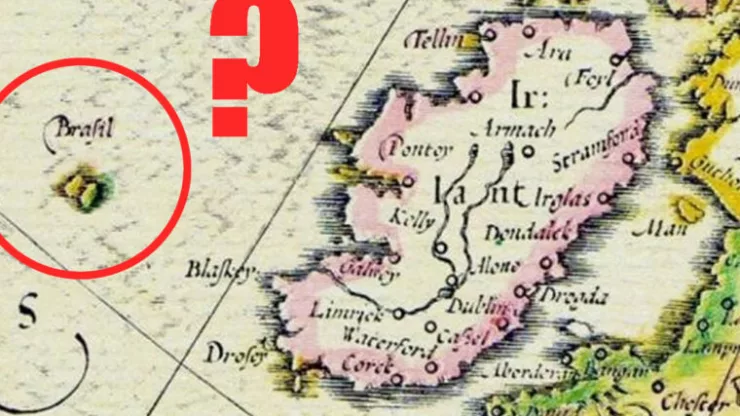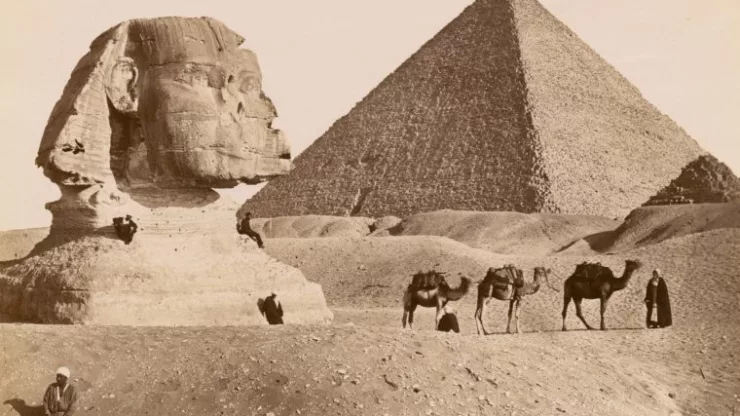Hy-Brasil is a phantom island that has long captured the imaginations of sailors, cartographers, and historians alike.
It was believed to be a land of unimaginable wealth and advanced civilization, hidden in the Atlantic Ocean.
This article will explore the story of Hy-Brasil, its origins, and the reasons behind its mysterious disappearance from maps in the 19th century.
The Origins of the Myth
The legend of Hy-Brasil dates back to ancient Irish folklore, where it was described as a magical land that remained invisible to human eyes, only becoming visible once every seven years.
Some accounts claim that the island was populated by an advanced civilization, while others mention its streets paved with gold or inhabited by a race of immortals.
The name “Hy-Brasil” is thought to have been derived from the Irish word Breasal, meaning “high king” or “mighty.” Over time, the name evolved into its more familiar form, and the island started appearing on maps as early as the 14th century.
Ireland on a recently restored world map from 1587. Included is the mythical island of Hy-Brasil. pic.twitter.com/SiJS34ERIS
— Finding Time (@TimeFinding) July 29, 2021
Hy-Brasil on Maps
The first known depiction of Hy-Brasil on a map dates back to 1325 on the Genoese map by cartographer Angelino Dulcert.
The island was often represented as a circular landmass with a river running through its center.
Over the centuries, Hy-Brasil appeared on numerous maps, including:
- The Catalan Atlas (1375) by Abraham Cresques
- Piri Reis map (1513) by Ottoman admiral Piri Reis
- Ortelius’s map of Europe (1595) by Abraham Ortelius
Expeditions and Sightings
Throughout the centuries, several expeditions were launched in search of Hy-Brasil. Some notable accounts include:
- John Cabot (1497): The Italian explorer John Cabot, sponsored by the English crown, set sail in search of Hy-Brasil but returned empty-handed.
- John Nisbet (1674): The Scottish sea captain John Nisbet claimed to have discovered Hy-Brasil during a voyage from France to Ireland. He described encountering a dense fog, after which the island appeared before his ship.
- Captain Alexander Johnson (1721): Johnson reported a sighting of Hy-Brasil during his journey from Lisbon to Newfoundland. However, he was unable to approach the island due to strong currents.
Theories About the Disappearance of Hy-Brasil
The elusive nature of Hy-Brasil has led to numerous theories attempting to explain its disappearance from maps:
- Cartographic errors: Some historians believe that Hy-Brasil was a cartographic error or a misplaced representation of a known landmass, such as the Azores or the Canary Islands.
- Submerged land: Another theory posits that the island may have been a real landmass that gradually sank or was submerged due to geological events or rising sea levels.
- Optical illusions: The sightings of Hy-Brasil could be attributed to optical illusions, such as Fata Morgana, a type of mirage that can create the illusion of distant landmasses or islands in certain atmospheric conditions.
Impact on Culture and Legends
The legend of Hy-Brasil has had a lasting impact on culture, inspiring countless stories, poems, and even music. Some notable examples include:
- “News from the Invisible World” (1708): An Irish satirical poem by John Dunton that describes a voyage to Hy-Brasil.
- “O’Brazil, the Isle of the Blest” (1810): A song by Irish poet Thomas Moore that romanticizes the mythical island.
- “The Brasil Project” (1994): A collaborative jazz album by various artists, inspired by the legend of Hy-Brasil.
Conclusion
The story of Hy-Brasil is a captivating tale of mystery and exploration, representing both the limits of human knowledge and the power of imagination.
Though it may never be known if Hy-Brasil truly existed or was simply a figment of the human psyche, the island’s legacy remains a fascinating part of historical lore, reminding us of the allure of the unknown.
FAQ
Q: What is Hy-Brasil?
A: Hy-Brasil is a legendary phantom island that was believed to be located in the Atlantic Ocean.
It has been associated with ancient Irish folklore and was often depicted on maps from the 14th to the 19th century.
Q: Did Hy-Brasil ever exist?
A: There is no definitive evidence to prove the existence of Hy-Brasil.
Some historians believe it may have been a cartographic error or a misplaced representation of a known landmass, while others speculate that it could have been a real island that sank or was submerged.
Q: Why did Hy-Brasil disappear from maps?
A: The disappearance of Hy-Brasil from maps is likely due to advancements in cartography and exploration that debunked the myth.
As more accurate maps were produced and previously uncharted territories were discovered, the concept of a hidden island like Hy-Brasil became less plausible.
Q: What are some cultural references to Hy-Brasil?
A: The legend of Hy-Brasil has inspired various works of literature, music, and art, including poems by John Dunton and Thomas Moore, and a collaborative jazz album called “The Brasil Project.”

I am a fun fact enthusiast and creator of Facts On Tap.
I love to share my knowledge and curiosity with readers and inspire them to learn something new every day.
When I’m not writing, I enjoy traveling, reading, and playing trivia games with my friends.




